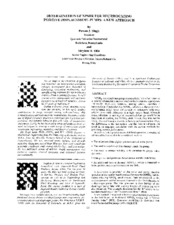| dc.description.abstract | NPSHR is a significant pump characteristic; it is often taken as a measure of minimum suction head needed to operate a pump satisfactorily. Hydraulic institute, among others, specifies a measurement of procedure for NPSHR, which is at the point that a reciprocating pump loses 3.0 percent in volumetric efficiency relative to a stable efficiency at a high suction head. Although noise, vibration, or any sign of mechanical damage would be an indication of reaching the NPSHR limit on test, they may not be easily observed during a short term factory performance test. Also, the difference in the test system and the field installation can result in an improper correlation with the current methods for predicting suction performance. In order to better predict successful field operation, a number of additional factors need to be considered, such as: *The influence of piping system attached to the pump. *The need to avoid cavitation damage inside the pump. *The need to operate reliably, with attention to proper valve dynamics. *Changes in fluid properties between test and the installation. *An additional term is defined (NPSHF), which is intended to better predict suction performance in the field. A description is provided of the valve and pump chamber operation as the suction head is reduced to near the NPSHR and the factors effecting NPSHR are discussed. Data are provided for the suction pressure and the pressure observed in the fluid chamber of a diaphragm pump. The inlet pressure vs time history of the diaphragm pump inlet with varying lengths of suction piping is also presented. This example demonstrates the deficiency in the standard modelling of the “Acceleration Head” effect. A new method is proposed to better predict suction performance in the field based on traditional NPSHR testing and a “Power Density Index” (PDI). Computer modelling is discussed that would be needed for pumps with a high PDI. | en |


